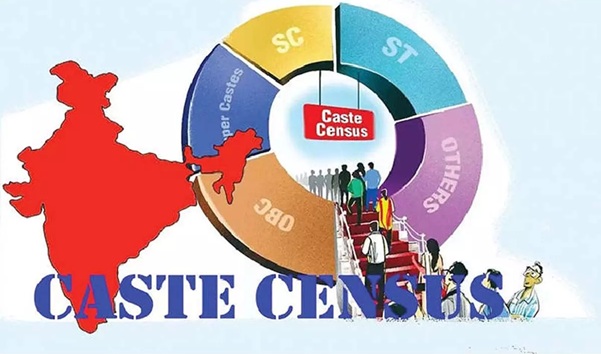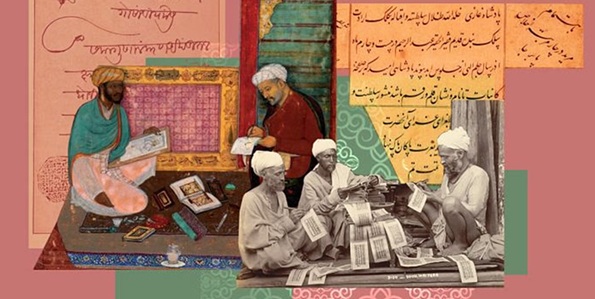India has a long-standing civilization based on the Varna system, which later evolved into a complex caste-based social structure. This structure has had profound effects on political, social, and economic life. After independence, India undertook several social reforms; however, caste-based data was not officially collected in the decennial census for a long time.
Recently, the central government issued a notification for the upcoming census. According to this, the census in snow-covered regions like Ladakh will begin on 1 October 2026, while in other parts of the country, it will start on 1 March 2027. This time, the caste census has been included, which holds historic significance from both social and policy-making perspectives.

Introduction to Census in India
Caste Census in India: Historical Timeline

- 1872 – The first attempt at a census in British India.
- It was not organized at an all-India level but was a preliminary experiment.
- Caste data was collected only in a limited form.
- 1881 – The first regular and organized census under Lord Ripon.
- This census was conducted with a focus on caste-based classification.
- Objective: To facilitate administration by understanding social divisions.
- 1931 – The last comprehensive caste census.
- It included social, economic, and population data for all castes.
- Even today, these figures are used as a reference in policy debates and research.
- 1941 – Caste information was collected in a limited form.
- The data was not published, likely due to World War II and administrative challenges.
Caste Data in Independent India
- 1951 – First Census of Independent India
- Caste data was limited only to Scheduled Castes (SC) and Scheduled Tribes (ST).
- Other Castes were not enumerated.
- 1990 – Mandal Commission Recommendations
- Based on the Mandal Commission’s recommendations, 27% reservation was implemented for Other Backward Classes (OBCs) in government jobs.
- This decision increased the importance of caste-based data.
- 2011 – Socio-Economic and Caste Census (SECC)
- A historic initiative, which collected caste data along with economic information nationwide.
- However, the caste data has not been publicly released.
- The government refrained from publishing it due to technical errors and questions about data accuracy.
- 2021 Census
- Scheduled census in 2021 was postponed due to the COVID-19 pandemic.
- Difference from General Census
- Caste census is distinct from the regular census.
- It collects information about each individual’s caste, which is essential for policy-making, reservation, and social justice.
Constitutional and Legal Provisions
1. Constitutional Provisions
- Article 246: Matters listed in the Union List, which include the right of the central government to conduct a census.
- Seventh Schedule (Entry 69): The Union List entry that mentions the census.
- Article 340: Provision for the President to constitute a Commission to examine the status of Socially and Educationally Backward Classes (SEBCs).
2. Legal Provisions
- Census Act, 1948: Provides the legal framework for conducting decennial censuses.
- Census Rules, 1990: Regulate the process of data collection and reporting.
Need for Caste Census
1. Constitutional Compliance
- A caste census ensures identification of socially and educationally backward classes in line with Article 340 and related provisions.
2. Policy Making
- Updated caste-based data enables evidence-based policy decisions.
- Facilitates targeted distribution of welfare schemes and equitable allocation of resources.
3. Affirmative Action
- Accurate identification of beneficiaries of reservations.
- Ensures equitable distribution of benefits among OBC sub-categories.
- Supported by the Justice Rohini Commission (2017) report, which emphasizes proper allocation among sub-castes.
4. Understanding Social Reality
- Provides insights into the socio-economic conditions of communities such as the Marathas in Maharashtra and Jats in Haryana.
- Assists in making informed decisions regarding their claims on national resources.
Caste Surveys vs. Caste Census
- Survey: Conducted for a limited time and specific region.
- Census: A statutory process under the Constitution, implemented nationwide.
Concerns Related to Caste Census
- Accuracy of Data
- The 2011 Socio-Economic and Caste Census (SECC) faced issues like duplicate entries and spelling errors.
- Without proper training for officials, errors and deliberate misreporting may occur.
- Classification Issues
- Differences exist between central and state caste lists.
- Example: In Haryana, Jats are not in the OBC list, while in Uttar Pradesh, they are included.
- Political Sensitivity
- Caste data may promote identity-based politics.
- Potential for caste-based demands for reservation and social unrest.
- Privacy and Data Security
- Digital data collection poses security risks.
- Low digital literacy in rural areas may lead to incorrect data entry.
Measures for a Successful Caste Census
- Consultative Process
- Registrar General and Census Commissioner should consult experts, caste groups, political organizations, and the general public.
- National Caste Directory
- Prepare a standardized list.
- Use online feedback for refinement and finalization.
- Training and Capacity Building
- Proper training of officials and staff.
- Leverage Artificial Intelligence (AI) and Big Data Analytics.
- Use of Modern Technology
- Employ digital platforms and mobile applications for data collection.
- Ensure data accuracy and quality.
Significance of Caste Data
- Social Reforms: As Dr. B.R. Ambedkar said, “Political reform is not possible without social reform.”
- Equal Opportunities: For backward and marginalized communities.
- Policy and Planning: Effective and equitable implementation of welfare schemes.
- OBC Sub-Categorization: Ensures fair distribution of benefits.
- Evidence-Based Decisions: Provides a basis for reservation and welfare policies.



